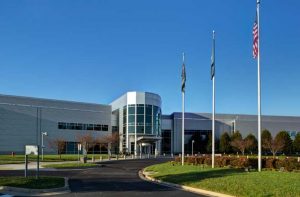
Last week I had the privilege of attending the QTS Richmond NAP Summit down in Richmond Virginia. Central Virginia’s infrastructure market has been on the rise for years, a phenomenon I have been following closely. Multiple fiber projects, data center expansions, and the arrival of Telxius’ MAREA and BRUSA cables down in Virginia Beach have created an opportunity that the whole region is just now starting to understand.
There were multiple panels, but perhaps the most telling commentary came during the Subsea Panel. Both Microsoft’s Frank Rey and Facebook’s Najam Ahmad repeatedly emphasized their companies’ desire for more diversity in infrastructure resources. The highly concentrated ecosystems we are seeing in places like Northern Virginia and Marseilles need alternatives, and not just for a bit of fiber and data center space but for the entire ecosystem that surrounds them. The hopeful components of such an ecosystem were definitely there listening.
I was surprised by the level of engagement from the local community. Not only was a team of Henrico County officials on hand and deeply involved in the event at multiple levels, but I talked with multiple regional business owners and developers looking to understand the infrastructure now at their disposal. Also actively participating were members of the education community, especially nearby Virginia Commonwealth University, which would like nothing more than to churn out graduates to power a local tech/telecom economic boon.
QTS’s Richmond-area facility was built from the ashes of the giant Qimonda chip plant that it bought in 2010. The earlier closing of that plant was a blow to the region’s economy, one that everyone in the region is looking to finally reverse. The arrival of major submarine cables in Virginia Beach combined with a drive for diversity from the major content companies has created an opportunity to grab a bit of infrastructure sunlight back from the data center metropolis of Northern Virginia. That rivalry between Northern Virginia and the rest of the state was clearly on display, although there were plenty of attendees from Ashburn participating as well.
If the region succeeds in its aims, earlier investments made in the region’s infrastructure by not just QTS but also Summit IG, Segra (formerly Lumos), Metro Fiber Networks Inc, RVA-IX, Mid-Atlantic Broadband, and many others will definitely be looking more and more prescient.
The summit was the brainchild of Vint Cerf, the most visible man to wear the mantle of ‘father of the internet’ and current Chief Internet Evangelist for Google, Clint Heiden, longtime veteran of the infrastructure sector and current Chief Revenue Officer at QTS, and Vinay Nagpal, president of InterGlobix. One doesn’t often see this kind of ecosystem-building infrastructure summit pulled off, but this one worked well.
If you haven't already, please take our Reader Survey! Just 3 questions to help us better understand who is reading Telecom Ramblings so we can serve you better!
Categories: Datacenter · Fiber Networks · Undersea cables





Discuss this Post